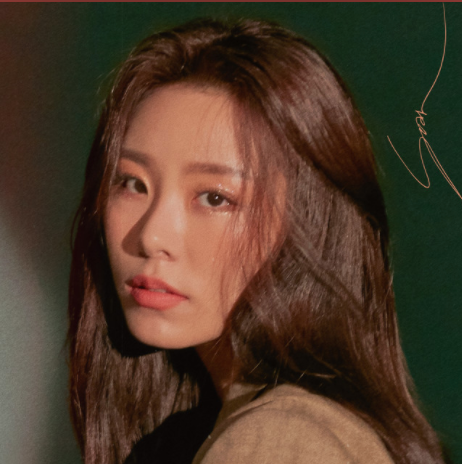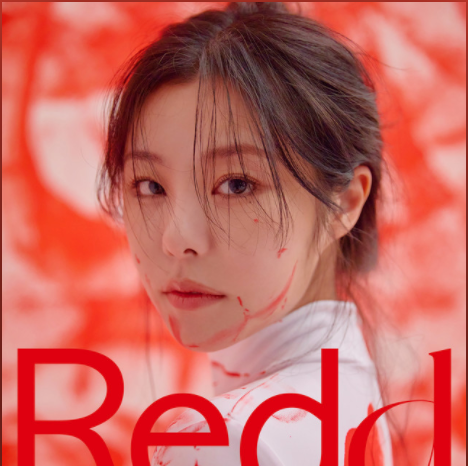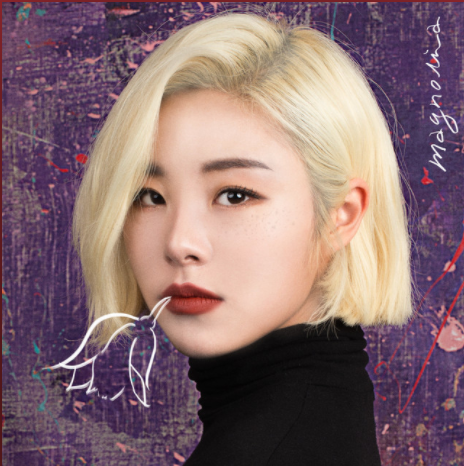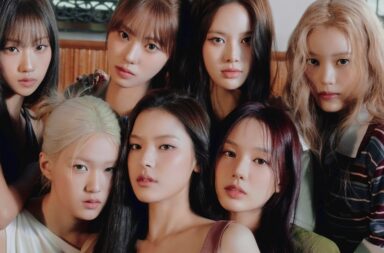If the album art of her previous solo releases are any indication, color is significant to Wheein’s work. Visually, her first mini album Redd carries a few similarities to her past singles, most obviously, the portrait of Wheein. The cover art of magnolia (2018), soar (2019), and Redd (2021) feature a shoulders-up portrait of the soloist, who is angled at three-quarters degrees. She glances over her left shoulder in all three images. This is where the similarities end, but Wheein’s posture ties together a message that these albums showcase something new about her artistry while maintaining a core focus on herself.
Wheein’s portrait for magnolia is dramatically set against a purple background, a canvas for abstract expressionism. Scratches, streaks, and splatters of paint surround the blonde soloist dressed in a black turtleneck. The sophisticated feel of magnolia contrasts with the softness of soar, where a dark green is the dominant color. Wheein’s face is painted with golden light, and unlike her hair that is carefully tucked behind her ear in magnolia, for soar, her auburn locks have been tossed over her shoulder and some strands brush her cheekbones. The background is out of focus, giving the green a blurrier look. When coupled with the fluid texture of the light and Wheein’s hair, soar is the soft paint to magnolia’s stiff paintbrush.
Redd, then, falls somewhere in the middle, even with the angle of Wheein’s face, which is not tilted as dramatically as it is in soar nor is it as stiff and formal as in magnolia. At first glance the background of Redd looks like blood, but in the context of the designs for her past releases, red paint is probably the more likely answer. Chaotic web of lines and faded paint spread across the white canvas, as if a paintbrush was dragged across the surface. The wider slashes of paint contrast with the finer elements in magnolia, while the background is more out of focus like soar, drawing a stronger connection to the 2019 work.
There is an important difference in Redd’s cover art, however. The background breaks the unspoken barrier between Wheein and the colors in her previous releases. Streaks and dots of red appear on her face in her newest effort; Wheein is no longer separated from her surroundings.
Musically, Redd slots neatly between magnolia and soar. “Good bye,” the single on soar, is a ballad through-and-through, showcasing Wheein’s beautiful vocals with minimal instrumentals to distract from it. The single “Easy” on magnolia features Sik-K and draws in hip hop and R&B influences. Redd pulls from these two sides and expands the listener’s perspective on Wheein the soloist. She collaborates with GSoul and pH-1 for “Buttery” and “Trash,” respectively, while she experiments with an R&B sound for both her upbeat and more laid back tracks.
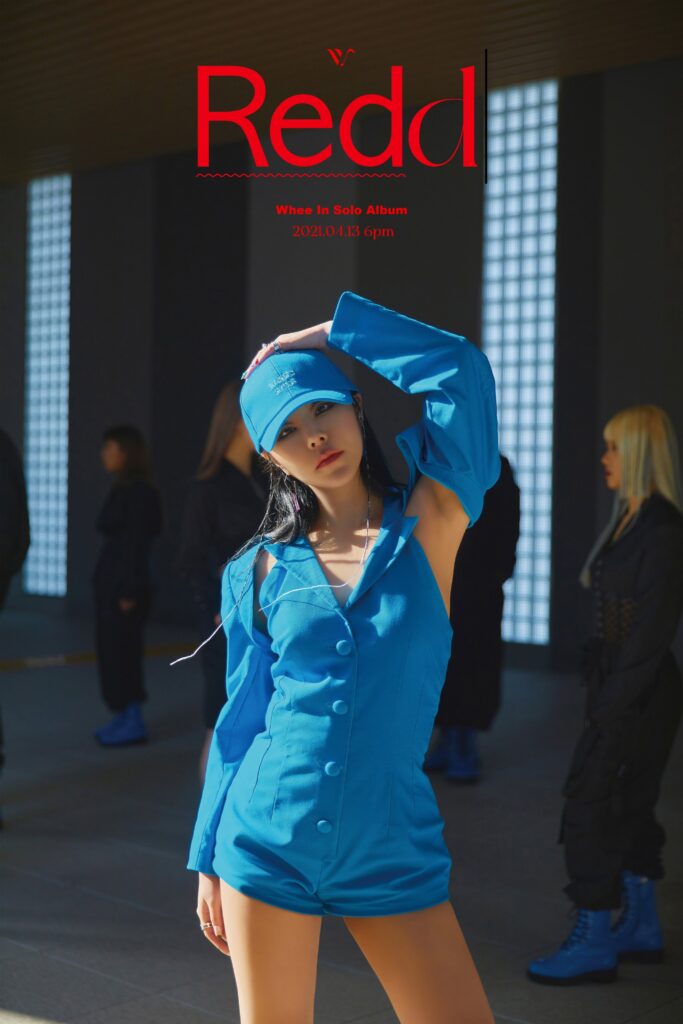
For an album titled Redd, it is no surprise that the stories told are about love. However, each track approaches it differently, and listeners note the various chapters of this romance, which has its sweet sides and its darker corners. Wheein begins her story with the title track “water color,” the only song that focuses on her as the storyteller. She recognizes who she is and what she wants and asserts that: “I’m still a dreamer / I’m raising my value / I want even more colors.” This confidence comes with Wheein claiming autonomy over her artistry—linking to her emphasis on color and art, which the above lyrics also do—and physical person, as she sings the opening lines, “I will draw me / On a white piece of paper.” With this blank paper, Wheein has the power to make what she wants, along with the choice to use the colors and tools she wants to create this new artwork.
Cushioned by a catchy hook, an impactful bassline, and dissonant chords, Wheein calls herself to action as she sings, “I’ll wake myself up from this slumber / And fill myself up.” Her first solo mini album is here, but it could not be created without her own efforts. “Water color” shows two sides of Wheein’s voice: her famous sultry lower notes are then juxtaposed with the playfulness of her voice during the chorus when she bends the note of “Ay!” Wheein’s assessment of herself resolves with confidence, reflecting the sentiments from the beginning. She concludes the upbeat track that makes listeners want to dance along with “everything looks good.”
“No Thanks,” the final track on Redd, loosely creates a link to the art concept, including the lyrics, “While drawing a picture with you / I get so lonely.” In this line, “with you” suggests some sort of connection to the other person, but in the end, Wheein flips this assumption on its head. She contrasts the attachment between her and her partner by following the first lines with “I get so lonely.” Regardless of this act (“drawing a picture”) bringing them together, an emotional distance builds.
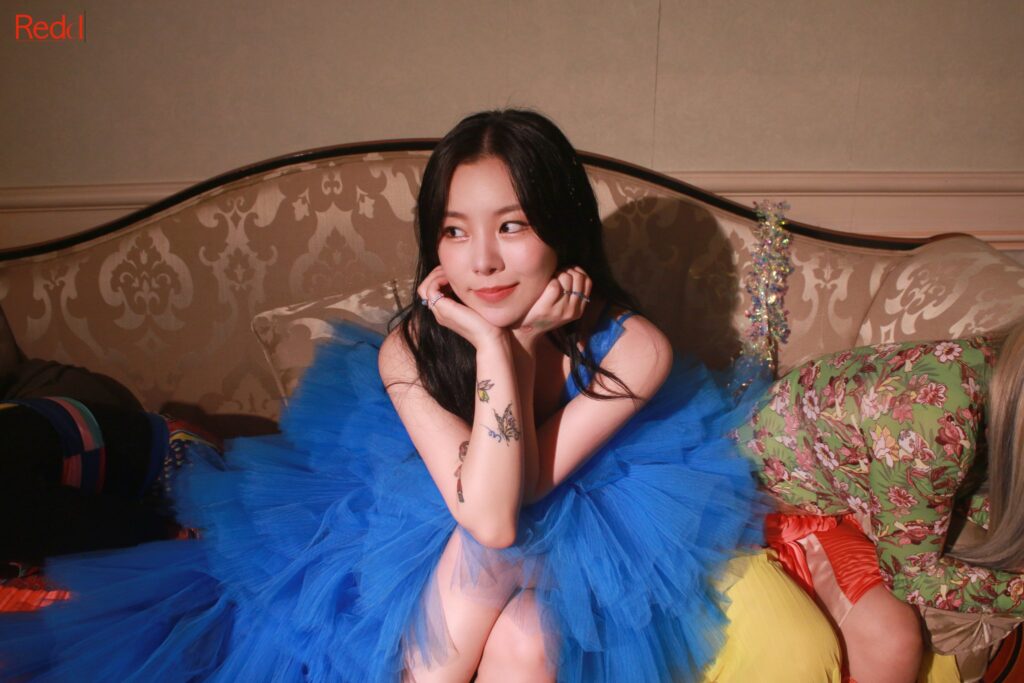
While the four other songs explore the nuances of her romantic relationship, “water color” and, similarly, “No Thanks” express Wheein’s autonomy in these narratives, whether it is fully realized, as in “water color” or she is beginning to rebuild it, as in “No Thanks.” In the latter, with breathy vocals and drawn out notes, Wheein acknowledges that the person in the song is no longer worth her attention. However, she also recognizes her vulnerability: Wheein sings that “it hurts,” and she battles with herself, as she wants to get a semblance of the comfort she had before back (“If I hug you just like this / Will I melt, will I have a hard time”). The person and their relationship have not completely left her mind.
Wheein tries to say “no thanks” to all of this, but this process will not be painless, and she realizes this. Throughout the lyrics, it usually goes “I think I’d hurt more,” indicating that Wheein is thinking about the consequences of an imagined event. The language subtly changes, however, to note that “it hurts”—the present tense. By the last line, it is “I think I’ll hurt more,” or the future tense; she anticipates this hurt coming again. While Wheein has come to realize that the relationship should be no more after acknowledging the problems with it, such as “Your priorities / I just found out I’m not one of them,” separating herself completely from this person does not mean that she can avoid the heartbreak.
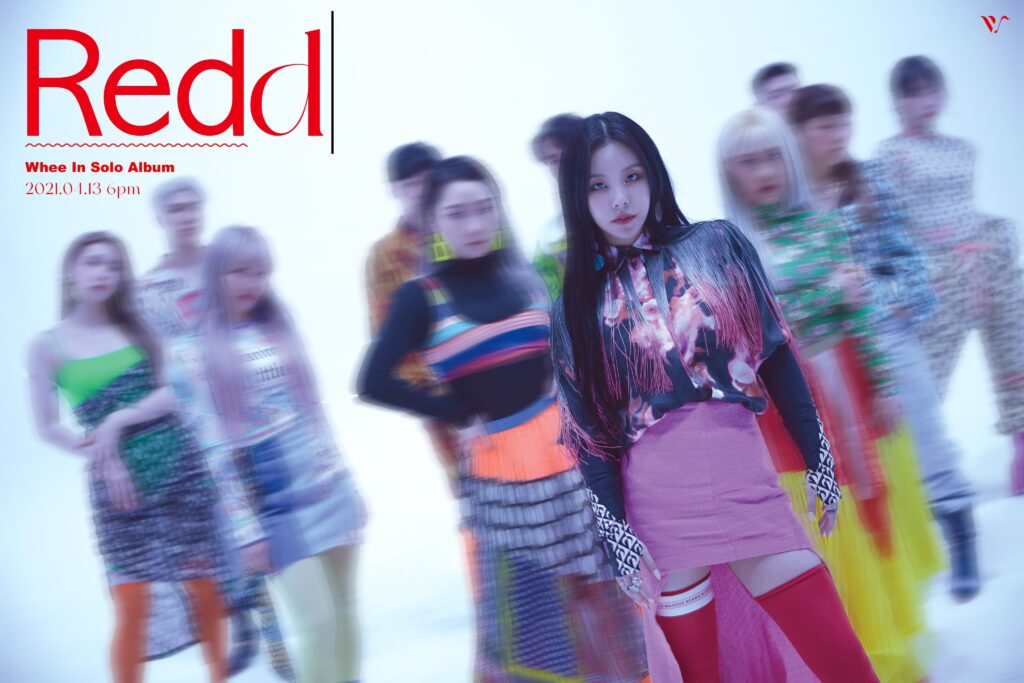
Even if the track itself feels the least “new” out of the six songs, “No Thanks” is a reckoning and a recognition, mostly with Wheein herself. Through the lyrics, listeners realize how she has to face the hurt she has experienced, experiences right now, and will experience going forward. This acknowledgement, while painful, is one step closer to gaining a little more autonomy than what she had in the relationship.
Juxtaposition is also found in “Butterfly,” Wheein’s collaboration with GSoul. The lyrics tell of holding on yet wanting to repel at the same time, such as “I can’t wake up from my sleep / I can’t get free from you.” A smooth R&B sound and the singers’ silky vocals bring forth a beautiful texture in the face of simple but emotionally powerful storytelling. “Butterfly” features hard hitting lines like “I get burned by your dream / I’m dying to survive / I’ll erase these memories.”
The title of this track is aptly named, since butterflies often symbolize life and transformation. The story moves from sentiments including “I can’t get free from you” to the singers watching this butterfly “fly high,” until it seemingly disappears from view. The song ends with a gentle command: “Now I forget you.”
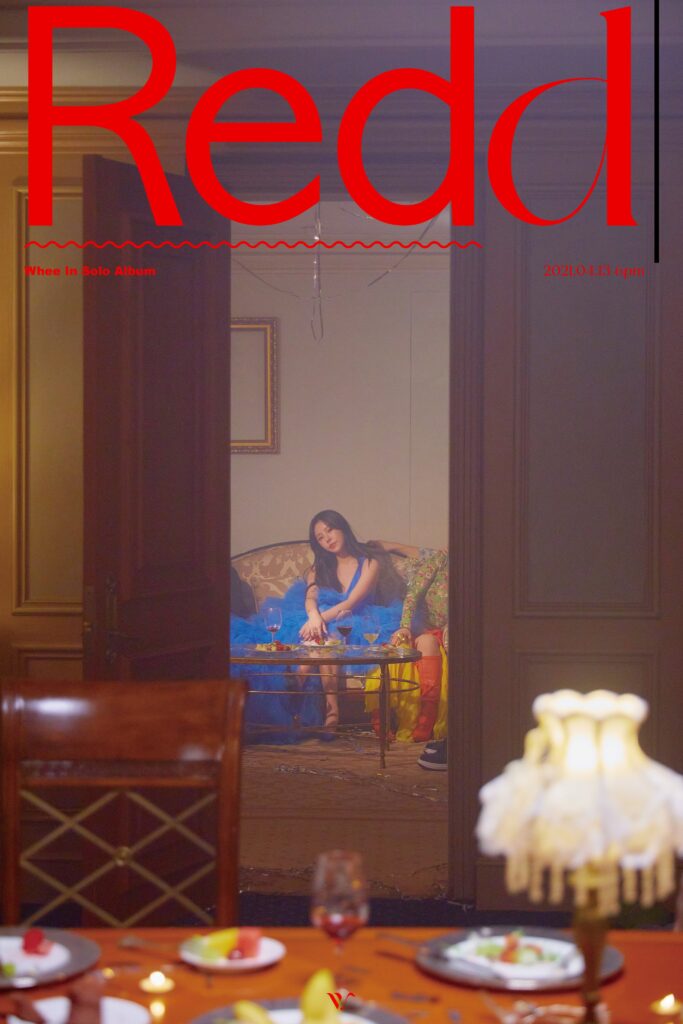
Wheein’s last collaboration is with rapper pH-1 for “Trash.” Following “water color,” “Trash” explores the attraction of a new love. The trap beat lends an impactful foundation that goes well with the emotions flying within the lyrics. Wheein’s wispier vocals also complement pH-1’s grittier rapping texture and the occasional autotuned moments contribute new elements. The upbeat nature of the track reflects the increasing heart rates of those in this story.
For an album called Redd, the only mention of the color comes from pH-1 lyrics when he raps, “My thoughts can be read in my eyes / It’s totally 19+ rated, this is a red story,” playing with the pronunciation of “read” and “red.” The catchy hook, complete with the repetition of “my head is trash,” leans into the volatile sexual energy between the two. Art references paint these emotions in a more poetic manner, but these feelings are made clear: “If I spread out the crumpled drawings / That are in my head you / You’d call me trash.” In the case of “Trash,” “red” may be representative of the obvious romantic passion seen and its growing intensity.
Wheein then pivots to vibrant and sweet songs starting with “OHOO,” a track that she has writing credits on, and “Springtime.” A simple song that opens with an acoustic guitar and light snaps, “OHOO” is heartwarming, hopeful, and full of happiness. The chorus’s sharp but muted beats provide a steady foundation as the melody and Wheein’s voice sway with a brightness that had yet to be found in Redd. Gentle adlibs sang in her head voice bring another rich layer to this warm track.
The images created by the lyrics add to the vibrancy of “OHOO.” “A melody that tickles the tip of my nose” is not a line one sees everyday. Besides this example, the main metaphor is a sketch, indicating the beginnings of a relationship (“My feelings are getting stronger with it / With a sketch the ends of my hands…”). Alongside it is the sweet refrain of “let’s fall in love.”
A dissonant hook takes precedence initially in “Springtime,” a stark contrast with the calming lyrics. Since the track is titled “Springtime,” it comes at no surprise that there is a dominance of green imagery, although this is interesting to note because green is the complement of red. “Cherry blossoms bloom” opens the song, while sunshine and “warm wind,” along with “flower petals,” appear throughout the rest of the lyrics. There is hope for this romance, as the last verse goes, “Spring talks to you / Thank you for waiting for me / Spring is promising you / That it will be by your side.” For now, Wheein is enjoying what she has, a carefree “la la la” repeat emphasizing this brightness and carefree attitude.
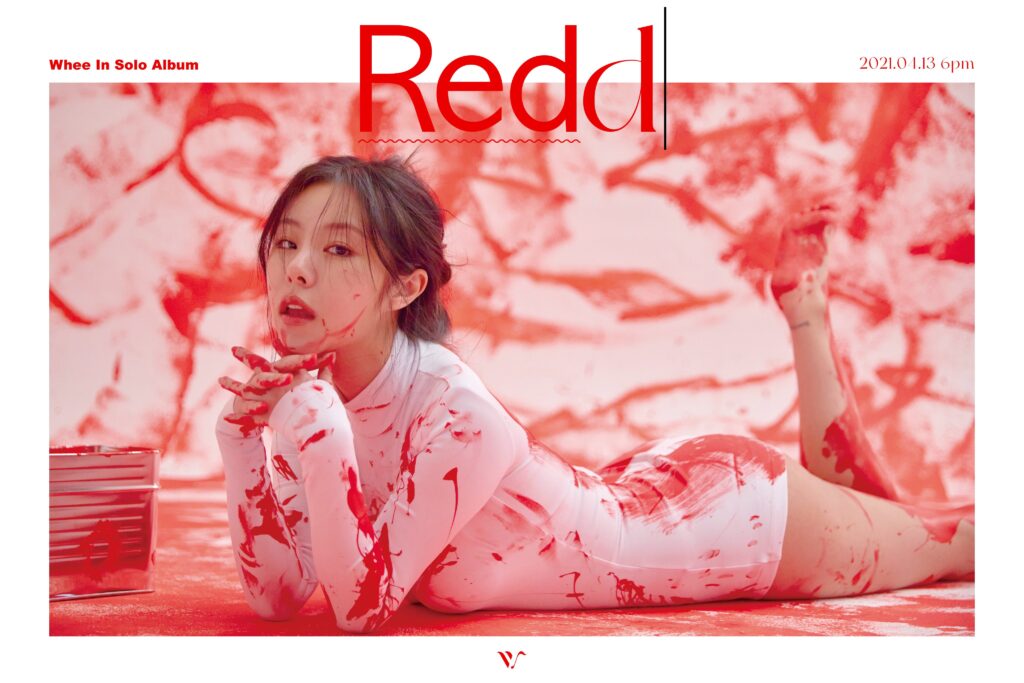
Redd is a fitting name for Wheein’s first solo album, since love is at the heart of the stories she tells. “You” dominates most of the songs, but the mini album began with “I” in “water color,” and this narrative of the self somewhat circles back around in “No Thanks.” However, the “I” that Wheein was in the beginning is not the same “I” she expresses in “No Thanks” because she is recovering the confidence and freedom she once possessed. Besides this broader focus, the mini visually connects to her past solo releases.
Redd fits between magnolia and solar both cover art-wise and musically, as Wheein further experiments with R&B and hip hop while maintaining a balance with her unique vocals. Whatever your mood is, Wheein’s voice draws you in or the instrumentals catch your attention or both. Either way, your ears will be very happy when listening to Redd.
(YouTube. Lyrics via Color Coded Lyrics, LyricsKpop [1][2][3][4][5]. Images via RBW Entertainment.)
